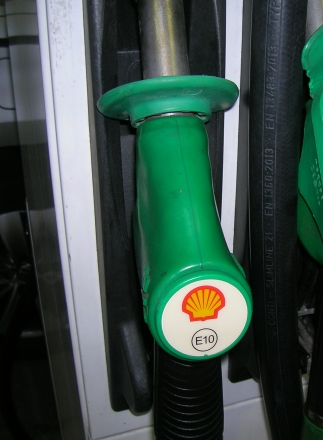Future
availability of "protection grade" E5 fuel for classics
What is the FBHVC?
The Federation of British Historic Vehicle Clubs (FBHVC) is a grouping
of historic vehicle clubs and museums together with some trade and
Individual Supporters.
FBHVC website
What is Viton?
Different compounds of Viton have been extensively tested in many
current biofuels. Viton
Burlen SU using Viton
An example is an HIF Needle & Seat Kit. Viton 0.070"
Viton
part
See our biofuels "information gateway" with links
to earlier news items and articles on the ethanol topic. More
Posted:
190801 |
 |
Recent
press reports on the expected introduction of "cleaner
E10 petrol" in the UK have made no mention of a lower
ethanol alternative, known as the "protection grade",
despite its widespread endorsement by the All-Party Historic
Vehicle Group (APPHVG) at Westminster. The E10 fuel is so called
because it has a 10% bioethanol content. The protection grade
fuel is 97-octane E5 with the ethanol content limited to 5%.
Classic car enthusiasts' concerns over higher ethanol levels
in petrol tend to focus on two main areas: technical issues
and the future availability and price of lower ethanol petrol
as a "protection grade" fuel available on forecourts
in the UK:
Technical issues
These issues are reviewed by the FBHVC on its website:
> Damage to classic car components higher ethanol
fuels can have on "original" engine and fuel supply
components. Sensible upgrades like Viton rubber fuel
hoses have been developed and are available to address them.
> Corrosion
in classic car fuel systems
because the long-term storage of petrol-ethanol mixtures (typically
over a winter period with a classic car) tends to absorb moisture
over time. A number of corrosion inhibitor additives which are
effective at protecting fuel system metals have been identified
and endorsed by the FBHVC. |
>
Combustion effects: whilst there is no evidence that the
addition of ethanol to petrol directly affects combustion adversely,
the addition of ethanol does have a leaning effect. Fuel mixture
strength becomes slightly weaker, and this is particularly true
for higher ethanol blends. Petrol containing 10% ethanol for
example, would result in a mixture-leaning effect equivalent
to 3.6%, which may be felt as a power loss, but also could contribute
to slightly hotter running.
Future availability and price of lower ethanol petrol issues
Assurances over the future availability of "protection
grade E5" from suppliers of bioethanol fuel seem to leave
future scope for wriggle room. Statements like "we fully
expect the DfT to to ensure the continued availability of E5
(as octane 97) grade fuel at UK forecourts alongside E10"
and "whilst we appreciate the E5 97 octane is slightly
more expensive than the E5 95 octane currently available . .
. and the price differential between E10 95 and E5 95 would
stay the same too - it's all down to refinery economics."
So two clear issues arise from that: the commercial case for
having an E5 97 fuel pump on many forecourts and the price of
that fuel will depend on the realities of customer demand, consequential
sales revenues for fuel station operators, the logistics of
delivering E5 97 to fuel stations and the commercial viability
for a fuel station operator of having a pump set aside for E5
97.
For a typical classic car enthusiast, like an MGV8 owner doing
between say 2,000 to 4,000 miles pa, the effect of a higher
price for E5 97 of say 15p a litre could be between £38
and £76 pa. |
|



